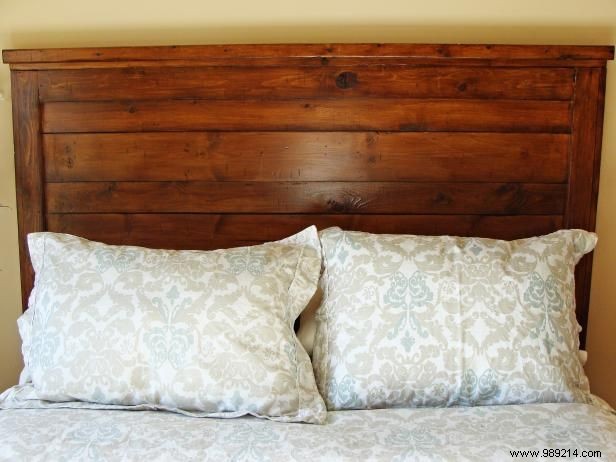
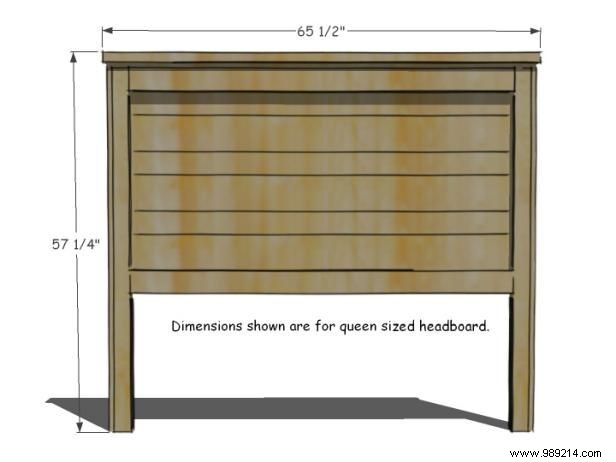
The above dimensions are for a queen bed. This cut list provides dimensions for other bed sizes.
Select wood that is straight. To add character, select boards that are rustic in nature with blemishes, cracks, and knots but are straight. To save time, have the lumberyard cut your boards as indicated on the cut list. Work on a clean, level surface large enough for the project and always wear safety glasses and ensure adequate ventilation when painting.
When buying lumber, pretend the board is an arrow on a bow and look across the board to see if it is straight.
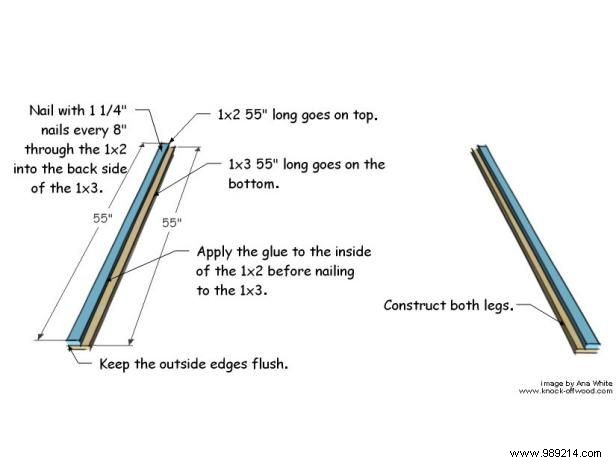
Apply glue to one side of a 1x2 inner leg piece. Lay the 1x2, glue-side down, on top of a 1x3 leg piece, lining up the outside edge and ends. Nail the 1x2 to the 1x3 every 6-8 inches with 1-1/4-inch nails. Build two of these legs as illustrated above. Tip:When nailing the boards, adjust the boards to keep the outside edges flush.
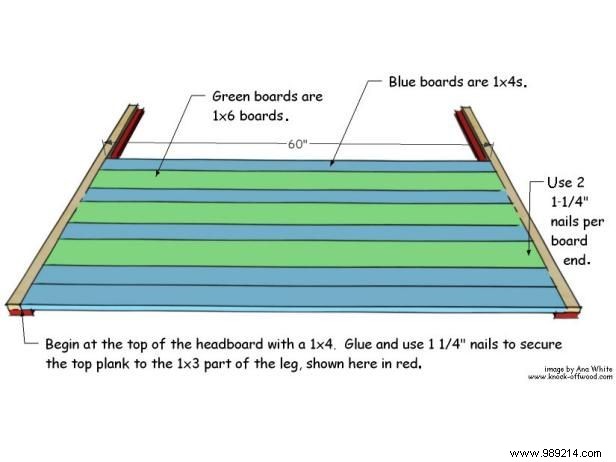
Starting at the top of the header, apply glue to the ends of a 1x4 panel board. Lay the 1x4 panel board on top of the legs and fasten with 1-1/4-inch nails. Use two nails at each end, nailing both sides of the panel boards to the legs as illustrated above. Nail the remaining panel boards to the legs, using glue and 1-1/4-inch nails, referring to the pattern above for alternating 1x4s and 1x6s. Tip:For a more rustic character, chisel or distress panel boards before nailing them to the legs, focusing on the edges to enhance the look of the planked headboard.
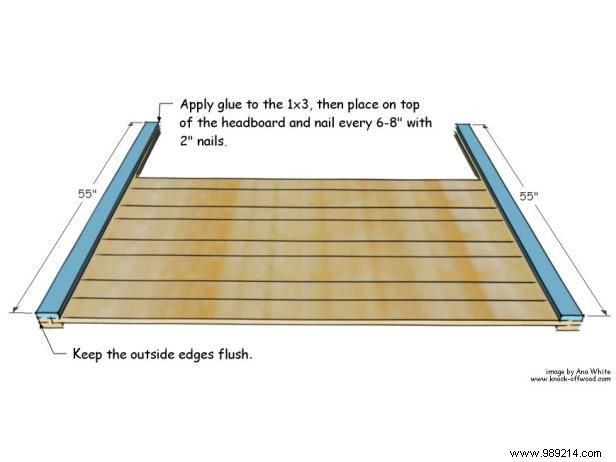
Apply glue to one side of two 1x3 leg pieces and attach them to the headboard legs as shown in the illustration. Nail every six to eight inches using 2-inch nails, making sure to keep the top and outside edges flush.
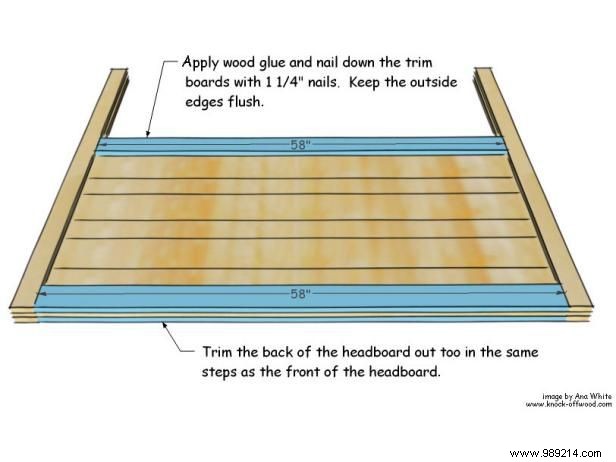
Trim the tops and bottoms of the header by applying glue to the 1x4 panel trim boards and nailing the panel trim boards to the top and bottom of both sides of the header. Use 1-1/4-inch nails and keep outside edges flush.
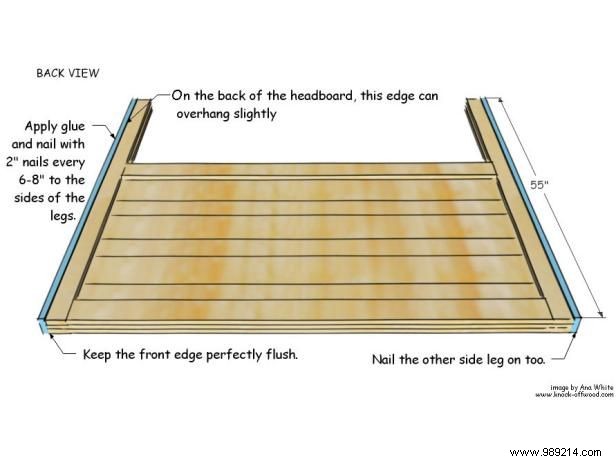
With the header facing down (minimum nails will show on the front of the header), apply glue and then the remaining two leg pieces to the sides of the legs. Keep the front edge flush, but the back may have a slight overhang. Use 2-inch nails every 6-8 inches.
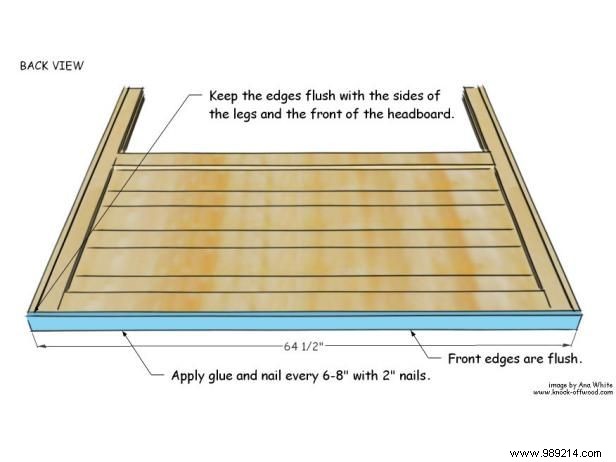
Apply glue to the top of the header. Align the top trim piece with the outside leg piece and attach, nailing every six to eight inches. Keep the front and outside edges flush.
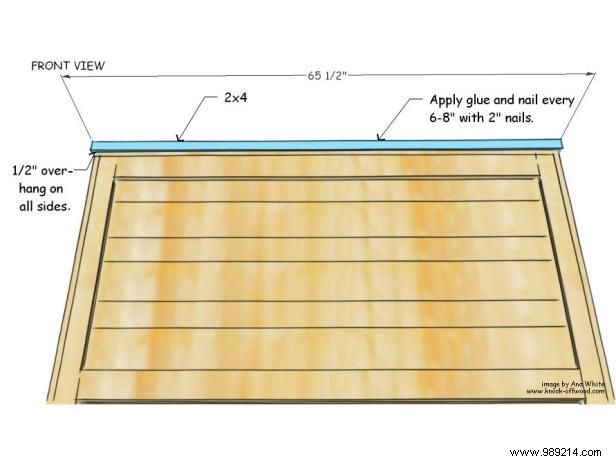
Apply glue to the top of the header. Overhang or raise the header so you can center the top 2x4 piece on the header with a 1/2-inch overhang on all sides. Nail every six to eight inches with 2-inch nails.
Tip:For a king-size headboard, scrap wood can be cut and nailed perpendicular to the boards to hold the boards in place.
Fill nail holes with wood filler. Let the filler dry, then sand the header with 80-grit sandpaper. Fill in the nail holes again - wood filler can shrink when it dries. Sand again, this time with 120-grit sandpaper. Finally, sand with 150-grit sandpaper.
Vacuum the headboard with a soft-bristled brush to remove sanding residue, then wipe the surface clean with a damp cloth. In a well-ventilated area, lightly coat the headboard with spray primer, following the directions on the container. Let dry completely.
Brush over paint, working in the direction of the wood grain. Apply two coats, allowing enough time for each coat to dry completely. To distress, roughen the edges with sandpaper. Chisel between boards to expose cracks between boards. Apply polish to distressed areas and buff until desired look is achieved. Spray with a clear coat to seal your headboard.
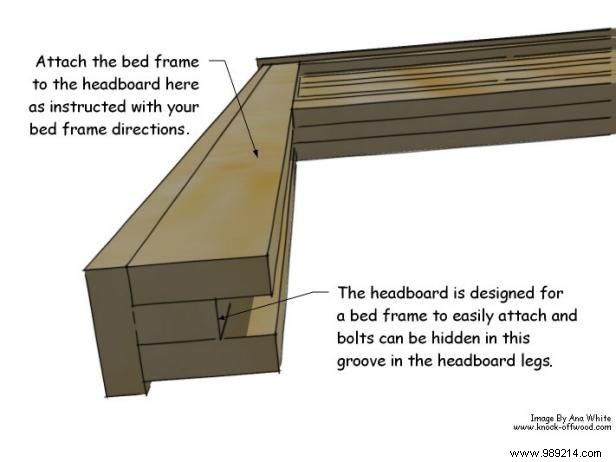
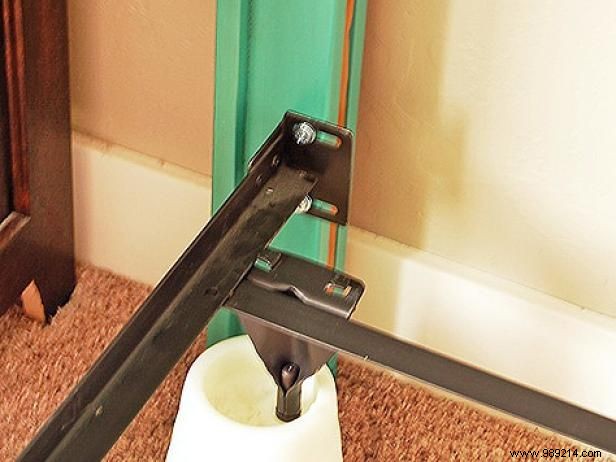
Follow the instructions on your bed frame to attach the headboard to the bed frame.

The beauty of the solid wood used to build this headboard can be preserved by choosing a stained finish. This headboard was finished with two coats of a dark walnut oil-based stain, covered with satin oil-based polyurethane. Photo by Nicole Barr.